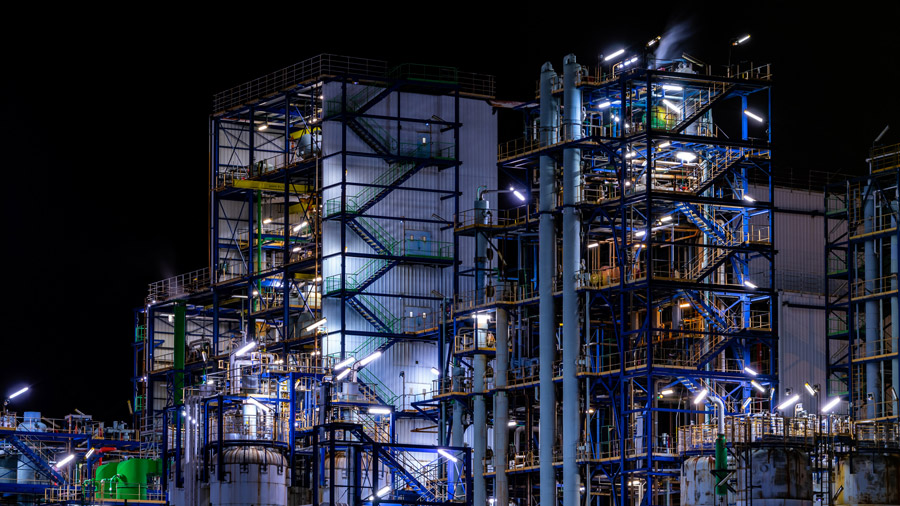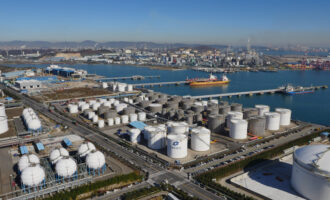
No sign of respite: Sustained pressure on base oil prices seen
Since 2014, there has been a sharp increase in base oil production capacity. In 2019, production capacity soared, with around 5.9 million tons of new base oil production, surpassing the combined total capacity increases over the past four years.
Alvin Chew, vice president of business development, base oils, at Argus Media in Singapore, described a base oil market that is heavily oversupplied, during the 2019 UEIL Annual Congress, in Cannes, France, last October. Plentiful supply generated sustained pressure on global base oil prices in 2019, he said.
Supply availability is an output of total production capacity minus capacity under plant maintenance. Chew, who joined Argus in 2014 as a base oil analyst, advised that over the past few years, supply availability during the second half of the year averaged 25-26 million tons. A sudden increase in product availability, however, has seen this expand to almost 28 million tons during the second half of 2019, up by around 10%.

Alongside greater supply availability, Chew highlighted increasing market uncertainty. Several major economic institutions have downgraded global growth forecasts. The International Monetary Fund (IMF) has lowered its forecast in the most recent World Economic Outlook to 3% in 2019, the gloomiest level seen since the global financial crisis. The Asian Development Bank (ADB) has also adjusted forecasts downwards for Asian economies — which have long been a bright spot for global growth, says Chew. The Singapore Ministry of Trade and Industry announced a growth forecast of 0.7% in its latest advance estimates for 2019, the slowest annual growth in recent years. Singapore’s economic performance could be regarded as a reliable barometer on the state of Asian economies and global trade, he says. A tepid gross domestic product (GDP) will likely mean a slowdown in base oil demand, he says.
Of course, an oversupplied market directly affects base oil producers’ pockets. A greater variety of supply options for blenders and buyers means collective resistance to price increases.
From 2010 to 2013, prices tend to trend upwards in the first nine months of each year. However, since 2014 there has been mounting pressure on prices. Coincidentally, this was the same time a wave of new production capacity began to hit the global market. In the first three quarters of 2019 global base oil prices have been trending downwards, despite an increase in crude oil pricing, says Chew.
Ordinarily, during times of heightened plant maintenance, base oil prices tend to receive support when supply availability declines. Across all major markets — the United States, Europe and Asia — there have been record levels or near record levels of plant maintenance. These unusually high levels have only provided marginal price support, however, says Chew. With no announced plans of base oil plant closures, high supply availability will likely continue.
Much of the new production capacity is in China. For the “first time in many years, the increase in new Chinese production capacity is likely to outweigh or exceed the total annual imports into China,” says Chew.
With the increase in Chinese base oil production capacity, Chinese base oil prices are expected to continue to experience downward pressure.
Exporters trying to generate growth in the world’s largest consuming country must adjust pricing to compete with local suppliers. Chinese producers are currently selling Group 3 base oils at competitive rates in China. Chew indicates domestic distributors are reducing their prices to compete with Group 2 players to grab additional market share. The traditional premium commanded by Group 3 over Group 2 is contracting, which is also impacting demand for Group 2 and Group 3 base oil imports.

This changing market structure is not only impacting businesses playing in China’s sandpit. Producers who were exporting to China, and are not prepared to compete on pricing, are being forced to search for new markets, says Chew. Higher pricing in Europe makes it an attractive option. Though, other Asian producers are also looking for new markets for products originally bound for China. This is likely to increase competition in other markets around the world, creating a very challenging landscape. Group 1 base oil sales are particularly challenging with fewer market outlets available.
As new Chinese plants become more established and increase production run-rates, they could start exploring export markets too.
A shifting market structure in the United States is also impacting the global market.
Consumption and demand in the United States is falling, and exports rose to record levels in 2018. Base oil production by U.S. refiners has dropped to its lowest levels since 2014. This may be in response to lower base oil margins, with U.S. refiners diverting production to better margin products.
Notwithstanding the current global oversupply situation, additional production capacity continues to come online around the world in 2019, with further capacity in China, Rotterdam and Singapore. With the global base oil market still expected to be oversupplied, we can expect continued downward pressure in the near term, says Chew.








